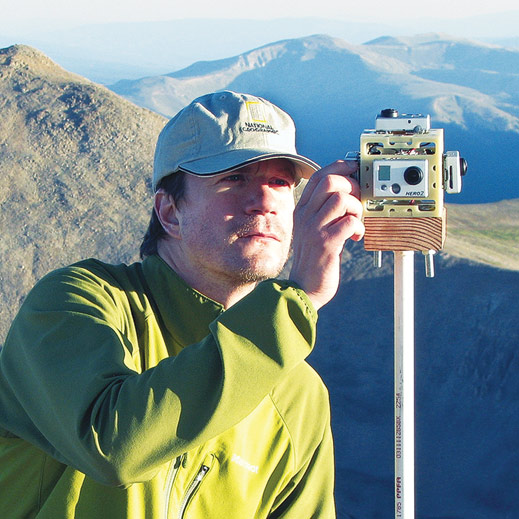Corey Jaskolski, SM ’02
Giving the natural world full exposure.
Corey Jaskolski has his share of challenging days as a fellow in the National Geographic Explorers group tasked with developing technology to create images of the world’s hardest-to-reach places.
In jungles, he contends with extreme humidity and golf-ball-size mosquitos that land on his lenses. Sand in the Middle East creeps into every mechanical crevice. Affixing suction-cup cameras to 50-foot whales from a 15-foot boat in the open Atlantic is tough. And sometimes when he sends a frighteningly expensive remote camera rig deep into the ocean or launches it into the upper atmosphere, it simply doesn’t come back.
These efforts aim to bring truly extraordinary images to light. “We’re so inundated by images,” Jaskolski says. “What used to be so compelling in photography 30 years ago, these days people look at for only a quarter of a second on a mobile device.”
This story is only available to subscribers.
Don’t settle for half the story.
Get paywall-free access to technology news for the here and now.
Subscribe now
Already a subscriber?
Sign in
You’ve read all your free stories.
MIT Technology Review provides an
intelligent and independent filter for the
flood of information about technology.
Subscribe now
Already a subscriber?
Sign in
Nevertheless, Jaskolski has had exceptional experiences shooting King Tut’s tomb, the Titanic wreck, and early human remains in flooded caves.
Jaskolski founded his own firm, Hydro Technologies, in 2002 with his wife, Ann, and fools with cameras and software code at his Denver headquarters, looking for better ways to capture nature. He rigs camera contraptions to suit conditions on the world’s highest mountains or in leagues-deep caves. He also programs cameras to see through foliage and builds modular arrays of cameras for recording 360° scenes, day and night.
After studying math and physics at the University of Wisconsin–Stephens Point, Jaskolski discovered ocean engineering at MIT, where he studied with Professor Chrys Chryssostomidis, SM ’67, NE ’68, PhD ’70, and sharpened his problem-solving skills with Professor Gilbert Strang ’55.
“Whenever I hire folks,” he says, “the question is not what field you’re in but ‘Can you solve a random problem you don’t yet have the tools to solve?’”
Jaskolski faced such a challenge recently: photographing the earliest known human skull, which was discovered at the base of the Hoyo Negro cave in Mexico’s Yucatan in 2011.
“You only get one shot at something like this,” he said after the successful shoot. “You’ve got divers using mixed gases and multiple tanks going thousands of feet into a cave … and you have one chance to get the imagery.”
Jaskolski has several goals left to achieve: planting cameras below the arctic ice, creating a high-resolution digital archive of shipwrecks, and perhaps even finding a megalodon fossil in the depths.
“What’s sitting twenty or thirty thousand feet down there in places we haven’t been?” he asks. “How many new species are down there to discover—ones that will rewrite our understanding of biology?”
